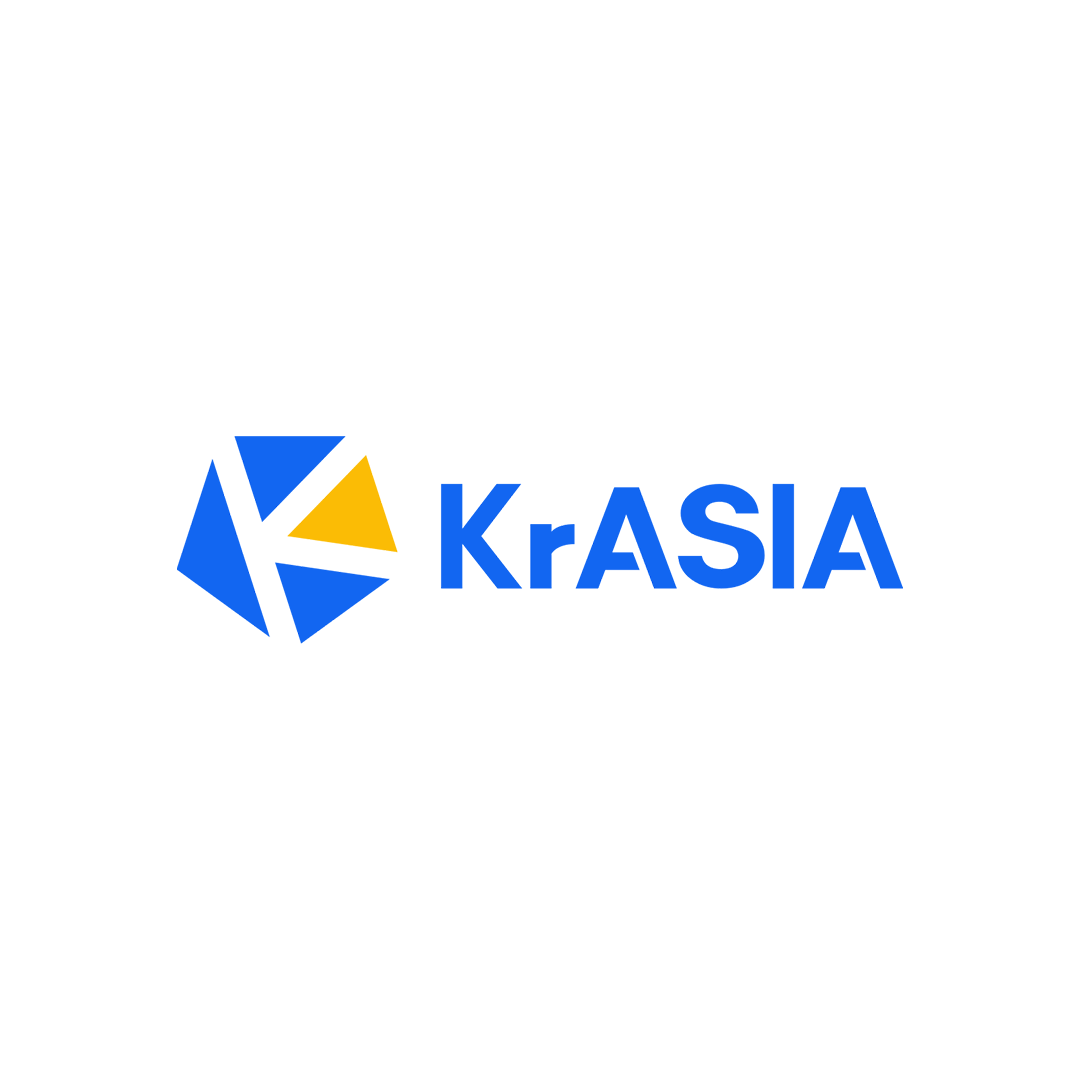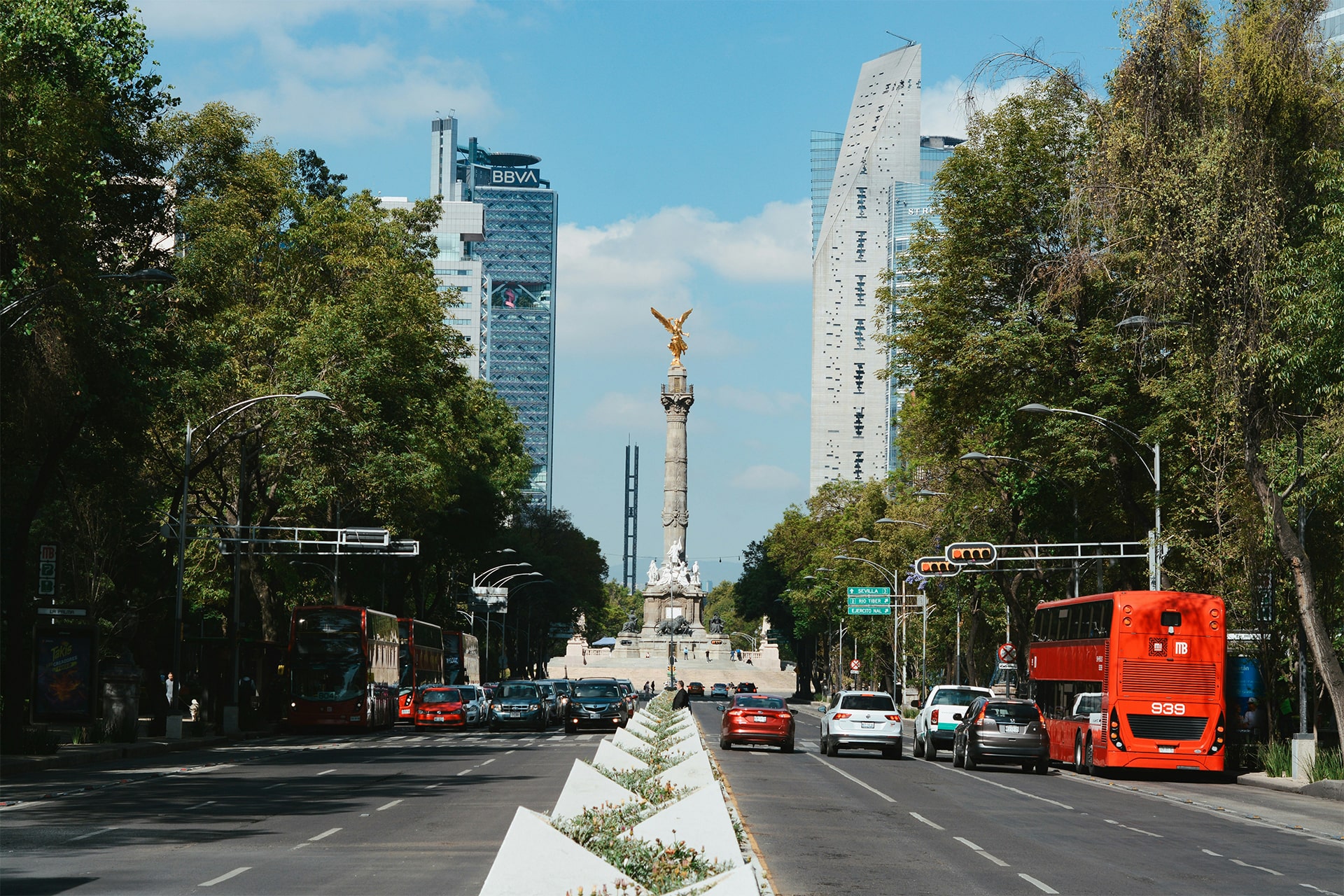China’s BAI Capital bets big on Mexico as US tensions reshape global investment
2 days ago
The recent US election has sent ripples across global markets, illuminating a complex and layered picture of Trump’s base—far from the typical caricature. Beneath their economic grievances lies a more profound cultural and identity-based allegiance, occasionally revealing biases simmering beneath the surface. For many in Europe, social and political dynamics in the US have grown increasingly elusive, even inscrutable. Yet, paradoxically, this same nation continues to shape the future of the world.
Throughout the campaign, Trump frequently turned his focus toward Mexico—a nation of nearly 130 million—as a fulcrum for his forceful positions on trade, immigration, and drug trafficking. With Mexico’s growing allure as a key destination for Chinese outbound ventures, some now ask if this signals the end for Chinese venture capital in Mexico.
Amid this uncertainty, Annabelle Yu Long, founding and managing partner of BAI Capital, offered her perspective. This October, BAI orchestrated a delegation of over 20 entrepreneurs and their families for an immersive journey to Mexico, timed to coincide with the inauguration of Mexico’s new president. The trip reflects BAI’s high-stakes international ambitions and deepening commitment to Mexico as an investment frontier.
Reflecting back to 2015, BAI first ventured internationally during the mobile internet boom, backing startups like Bigo Live, Club Factory, and OPay. By 2020, BAI had confidently led Stori’s Series A+ funding round in Mexico, continuing to fund the company in every subsequent phase. Today, Stori stands as BAI’s most ambitious Mexican investment, anchoring a portfolio that now includes six other ventures in the country.
When 36Kr spoke with Long in early 2019, she reflected on BAI’s evolution and the hard-won lessons along the way. Emerging alongside the rise of China’s internet economy, BAI has matured from agile, experimental beginnings to a deliberate, boutique-style approach that has carved out a distinct position in a crowded market.
Now, with the dominant narrative in China shifting, 36Kr revisited Long to discuss the current opportunities and challenges for Chinese companies expanding internationally, Mexico’s role as an emerging nexus for global investment, and how funds are recalibrating to navigate today’s turbulent market.
The following interview has been edited and consolidated for brevity and clarity.
36Kr: Could you tell us about this trip?Annabelle Yu Long (AL): This was no spur-of-the-moment journey. The nine-day, eight-night Mexico trip took us over six months to plan. We brought 20 people across the globe on a 22-hour flight to the other side of the world, creating an environment where China’s next-generation entrepreneurs could deeply engage with Mexico’s top political elites and business leaders.
We intentionally scheduled our trip during the inauguration of Mexico’s first female president, Claudia Sheinbaum, and experienced firsthand the country’s progressive and invigorating spirit. An accomplished individual with an energy engineering PhD and former ballet student with her signature high ponytail, Sheinbaum has often been compared to Germany’s Angela Merkel. During her tenure as mayor of Mexico City, she achieved significant policy successes, winning the presidency with nearly 60% of the vote.
BAI has cultivated a presence in Mexico for five years and developed a deep understanding of the country’s complex dependence on North America, particularly the US. Within two short months, both countries saw new leaders assume office, adding a layer of significance to our discussions there.
When it came time to part ways, our delegation described it as a “ceiling-level experience,” with some even feeling that it elevated their perspective on life. I felt satisfied that our efforts had earned their trust.
36Kr: Who did you meet, and what topics did you discuss?AL: Marcelo Ebrard, Mexico’s newly appointed minister of economy and head of the cabinet, returned from a hurricane relief site on his third day in office to meet our delegation. In a focused, two-hour conversation, he provided a candid assessment of key issues, including the renewal of the USMCA, as well as the dynamics among the US, Mexico, and China.
While he underscored Mexico’s inextricable ties to the US, and the ensuing regulatory and tariff challenges for Chinese companies, he also conveyed a positive outlook on China-Mexico cooperation, welcoming direct investment in local markets like consumer goods, finance, and services. His colleagues praised BAI Capital’s contributions to Mexico, particularly for supporting Stori’s fintech initiatives, which have driven consumption growth, attracted international talent, and established it as a star among Mexican startups.
On the topic of recent judicial reforms, he bluntly stated that Mexico’s previous judicial system had been controlled by roughly 800 influential families across generations, resulting in inefficiency, lack of transparency, and accountability. Contrary to popular belief, the reform aims to foster a more transparent and equitable business and social environment, not simply to cater to a leftist social agenda.
To address the entrepreneurs’ follow-up questions, Marcelo asked his team to print judicial reform briefings on the spot, distributing them to everyone present and offering a detailed explanation. This efficiency and decisiveness challenged stereotypes of Latin American bureaucratic inertia.
A small detail also left a deep impression on us: the name tags for our Chinese guests were initially written in Mandarin pinyin, but after introductions were made in English, the staff quickly replaced them with English name tags.
Through my connection with the HSBC board, we arranged a private meeting with Jose Antonio Meade, one of Mexico’s most respected political figures. With a background in law, he has served as finance, foreign affairs, interior, and labor minister and was once a top contender for the presidency. When he predicted Trump’s victory and its likely impact on Mexico and China, his analysis felt grounded and prescient in retrospect.
What truly moved me was seeing the self-assured, relaxed, and inquisitive nature of the Chinese entrepreneurs in our group. Their international outlook, tenacity, and openness left a lasting impression on Mexico’s business circles, reshaping old stereotypes of Chinese corporate ruthlessness and relentless cost-cutting. Though we arranged for simultaneous interpretation, most entrepreneurs engaged comfortably in English.
36Kr: What was your goal in organizing this trip for top-tier entrepreneurs?AL: This trip was actually part of BAI’s annual “private board meeting.”
Over the past two years, China’s venture capital industry has faced tough conditions, with a certain air of negativity setting in. In challenging times, it’s easy to lose balance and direction. However, I believe that, while it’s essential to confront reality with a clear-headed approach, giving in to defeatism is not the answer. Accepting challenges doesn’t equate to surrendering, and doing nothing is never a solution. I’m not one to blame setbacks on overzealousness. Instead, I’m curious about alternative approaches.
I often warn against homogeneous complaints, which only lead to increasingly low-quality thinking and distance us from the truth. Many lament that the golden age is over, that there are no opportunities, that it’s all about waiting for beta. But without realizing it, the next era has quietly begun.
My colleagues and I at BAI have been pursuing internationalization for years, with more than half of our time spent traveling globally each year. The world is changing rapidly, and only those who experience it firsthand can truly understand.
China’s top entrepreneurs are seriously discussing survival strategies for the next era—internationalization is on everyone’s mind. I had long considered how to organize an environment conducive to deep thinking, discussion, and exploration—a search for pathways forward.
To set up such an environment, the right setting was essential. Europe, the US, Japan, and Southeast Asia were already familiar territories. Mexico, a relatively unexplored frontier, felt like the perfect choice. Once the location was determined, the question was who to invite. The group needed a mix of industries, shared intellectual depth, successful track records, and curiosity about the world—we wanted people whose ages and interests would complement each other.
36Kr: What specific takeaways emerged from spending eight days together in Mexico?AL: Our delegation ended up with around 20 people, representing top-tier entrepreneurs, next-generation leaders, and pioneers of China’s overseas expansions, as well as strategic investors from multinational companies generating over RMB 5 trillion in annual revenue. We’re deeply grateful they entrusted us with their precious National Day holiday—even bringing their families along.
We aimed to give them a more comprehensive understanding of Mexico. Beyond the well-known exhibits like a private tour of Mexico’s National Museum of Anthropology and a ballet performance at the National Palace of Fine Arts, we also explored local markets to experience the informal economy. Visiting the grand Pyramids of the Sun and the Moon, built in 200 BC as the “City of the Sun” at one-third the size of Beijing during the Qing Dynasty, offered a humbling perspective on the rise and fall of civilizations.
When the Sanxingdui culture entered the Bronze Age, Mesoamerican culture was still working with obsidian. In Frida Kahlo’s Blue House, we even found remnants of Trotsky’s exile. One of my favorite places was the MARCO Museum in Monterrey, an architectural marvel by Ricardo Legorreta that floods with pure, vibrant light.
The trip wasn’t just about scouting business opportunities—it was an immersive dive into Mexico’s humanity, politics, economy, consumer behavior, values, and cultural heritage. Maybe it was the energy from the cactus and agave, but in Mexico, we discovered new perspectives and markets—possibilities we hadn’t seen before and limitations we needed to recognize.
36Kr: For entrepreneurs new to Mexico, what were the top concerns?AL: One recurring question we discussed with local businesspeople was how to navigate economic cycles and intergenerational wealth transfer.
Alejandro Ramirez Magaña, CEO of Cinepolis, hosted us at an exclusive club for Mexico’s elite industrialists, where he shared his journey of transforming a family-owned business into the world’s third largest cinema chain through innovation in technology, content, and customer experience.
In Monterrey, an industrial powerhouse, our long-time friend Carlos Montemayor guided us through industrial zones and commercial real estate ventures his family has managed for five generations. His family owns over half the land in Monterrey, amassed plot by plot, much like playing a life-sized Monopoly game. Witnessing how industry and commerce have evolved over generations, they have a seasoned perspective on historical cycles and geopolitical tensions.
Today, supply chain shifts bring huge opportunities, yet Trump’s policies could present short-term hurdles. One entrepreneur on our trip was surprised to find his company’s phone products at a Montemayor-owned electronics mall. Few had realized that Monterrey is just over a two-hour drive from the US border.
The area reminds me of Shenzhen in 2000.
36Kr: How would Trump’s return impact Mexico?AL: During National Day in Mexico, in closed-door discussions with former finance minister Jose Antonio Meade and economist Gabriel Lozano, they shared candidly about the potential issues if Trump returned to power.
First, there’s immigration. Trump has consistently pushed for stricter border security and the deportation of millions of undocumented immigrants. In recent US administrations, Mexico essentially became an extension of White House border policy, a “wall” in Trump’s first term. If he returns, Trump may initiate one of the largest deportation programs in US history, targeting an estimated 11 million undocumented residents, 4 million of whom are Mexican.
Trump’s inflammatory rhetoric has already instilled fear in immigrant communities, causing a chilling effect regardless of the policy’s feasibility or enforceability.
Remittances are a crucial part of Mexico’s economy, growing for ten consecutive years since 2014. Remittances accounted for 3.5% of Mexico’s GDP in 2023 and are projected to reach 3.7% in 2024. A clampdown on immigration would impact Mexico’s foreign exchange income.
In manufacturing, Trump has voiced strong opposition to US companies outsourcing to Mexico, particularly for automotive production. He has proposed punitive tariffs on Mexican-produced cars and companies moving US manufacturing offshore, which could impact Mexico’s automotive industry, valued at close to USD 90 billion and comprising around 5% of Mexico’s GDP.
If implemented, these policies would deliver a major blow to Mexico’s economy. Excessive tariffs could deter American automakers from setting up plants in Mexico. I’m watching to see whether Elon Musk will reconsider his plans for Tesla’s gigafactory in Mexico.
Additionally, Trump has hinted at imposing a 10–20% tariff on all imports, including those from the EU. Given Mexico’s proximity and manufacturing advantages, it’s likely to bear the brunt of any tariffs.
During rallies, Trump even challenged Sheinbaum to “stop this onslaught of criminals and drugs” coming into the US, or face a 25% tariff on all Mexican goods.
For Chinese businesses, circumventing tariffs by using Mexico as a “manufacturing detour” may become more challenging. Trump has been vocal about targeting Chinese companies relocating supply chains to Mexico to bypass US tariffs, vowing to block Chinese car brands made in Mexico from entering the US.
Short-term pressures will likely be intense for automotive and consumer electronics sectors. However, the nearshoring trend remains robust and hard to reverse.
36Kr: How do you view US-Mexico relations in this context?AL: “Poor Mexico, so far from god, so close to the United States.” This famous lament from former President Porfirio Diaz captures the complicated love-hate relationship between Mexico and the US.
Mexico’s geographic proximity to the US makes it inseparable from American influence. This complex relationship has long honed the country’s resilience and adaptability. Mexico has the potential to balance relations with the US, LATAM, and countries like China. I describe it as a “double-headed serpent on a cactus,” evoking the Aztec god Quetzalcoatl for Mexico’s pragmatic and adaptable balance.
Trump once called “tariff” the “most beautiful word in the dictionary.” Today, Mexico has overtaken China as the top source of US imports. The two countries’ supply chains are deeply intertwined, and high tariffs would hurt American businesses and consumers alike, intensifying inflationary pressures in the US.
Initially, Trump’s term might strain relations, and the peso could take a hit. However, Trump is a transactional figure, and Sheinbaum might succeed in showcasing Mexico’s efforts to curb immigration and avert the most economically damaging policies.
Thus, Mexico can leverage American businesses, particularly those benefiting from the USMCA, to lobby against Trump’s tariffs. Trump has stated that he would officially notify Mexico and Canada of his intent to renegotiate the USMCA, emphasizing that this renegotiation would not roll back previous gains but aim to improve certain sectors, especially the automotive industry.
Mexico’s current economic minister, Marcelo Ebrard, handled diplomatic relations with Trump’s administration under Andres Manuel Lopez Obrador (AMLO). With his experience, Ebrard may be well-suited for the upcoming US-Mexico trade negotiations.
Small nations often navigate survival under the shadow of larger powers. Under the North American Free Trade Agreement’s influence, Mexico’s economy has transformed, with much of its informal economy adapting to the challenges and benefits of globalization.
China’s development experience, particularly its per capita GDP, is often viewed as a more accessible model for Mexico, offering a relatable alternative to Silicon Valley’s influence. Brands like Xiaomi, Huawei, and Didi have grown popular in Mexico, while platforms like Shein have earned a significant following.
36Kr: Some say Mexico is an investment hotspot. If Trump returns, will the rationale for investing in Mexico collapse?AL: Genuine investment requires more than impulsive trends and herd mentality. Gold rush behavior doesn’t last.
As the largest beneficiary of US-China tensions, Mexico is seizing supply chain opportunities through nearshoring. The economy has heated up, with 2023 foreign direct investment (FDI) reaching USD 36.06 billion, a 30-year high, and placing Mexico ninth among global FDI recipients. This ranks two spots higher than in 2022, with FDI expected to create over 65,000 jobs by July 2024.
However, even in 2013, FDI in Mexico was USD 35.18 billion. Much of the appeal of LATAM as an emerging market has already been felt, with US investors’ mixed feelings—a blend of optimism and past disappointments.
When we started investing in Mexico, we took a grounded approach. Success in international capital markets requires consistent performance. Telling flashy stories alone won’t work.
About half of Mexico’s FDI comes from the US, and this segment will likely see reductions in the short term. The peso has been weakening since May and hit a 26-month low after Trump’s win. Instead of relying on hot money, we need to build sustainable ecosystems and ensure stable growth.
Some see Mexico as a follower of Brazil in South America, but if you check, Mexico is actually part of North America, sharing a border with the US. Mexico’s economy is effectively an extension of the US economy, so nearshoring isn’t going anywhere. BAI is confident in Mexico’s domestic economy and its long-term strength.
36Kr: Why are you so confident?AL: Under former President AMLO, Mexico saw a significant rise in the minimum wage. In 2024, the daily minimum wage in Mexico increased by 20%, reaching MXN 248.9 (or MXN 374.8 along the northern border). Compared to 2018, these wages have cumulatively increased by 142.4% and 112.1%, respectively, effectively doubling purchasing power after 35 years of stagnation.
The unemployment rate hit a record low since 2006, with 22.3 million formal jobs created, employing 60.3 million people and reducing the unemployment rate to 2.9%—the second lowest among OECD countries. Additionally, Mexico’s poverty population decreased by 5 million people. Large infrastructure projects such as the Mayan railway, the Tehuantepec Isthmus corridor, and various airport and highway projects have also advanced.
The new president, Claudia Sheinbaum, is known for her pragmatic and rational approach, promising a corruption-free and law-abiding government dedicated to serving all citizens and fostering a business-friendly environment.
Mexico has a strong foundation in manufacturing, standing as the world’s fourth largest automotive manufacturing base. Over the past two decades, global manufacturers have flocked to Mexico to establish their super factories. This manufacturing base has spurred a continuous demand for employment, transforming former street vendors into industrial workers and enabling nationwide industrial upgrading and consumer growth—much like China’s economic rise. We’re fortunate to be here on the eve of a boom.
However, our investment strategy is the reverse. Manufacturing requires long chains, slow cycles, and delayed returns—it’s a field more suited to large industries than venture capital. Manufacturing has a compounding effect that fuels consumerism, retail, and eventually financial services. Instead, we’ve focused on fintech first to monetize, gradually expanding into retail and supply chain, with manufacturing opportunities following naturally.
36Kr: We heard you met with a lot of “Top Brains” around 2020. Did they help you see Mexico’s potential?AL: Since 2019, BlackRock’s founder Larry Fink has told me each time we met in New York that Mexico would be the biggest beneficiary of US-China tensions. At first, I didn’t fully appreciate this until we invested in Stori, our first “grasp” on Mexico, and saw its real potential.
The macroeconomic conditions I mentioned earlier have played out in Stori’s journey. Mexico is the world’s third largest market for financial inclusion after China and the US, surpassing India, Indonesia, and Brazil. Many previously unbanked people now have access to financial services and warmly accept Stori, a digital foreign bank founded by Chinese Americans.
As a new middle class emerges, fueled by manufacturing-driven employment and wealth, consumer confidence grows. People are willing to borrow and spend, harboring hopes for the future. This beta—the underlying economic momentum—has organically emerged, not something we could fabricate. Farmers who once ran street stalls are now working for companies like Huawei and Xiaomi, enjoying job security, bank accounts, credit for homes and cars, and even shopping with the Stori and Shein co-branded card. The entire nation’s outlook is lifting.
36Kr: Beyond the macro environment, what are Stori’s keys to success?AL: Honestly, I wasn’t very familiar with Mexico when we first invested in Stori, but this company has delivered outstanding results. By January 2023, when I visited Mexico for the first time, Stori had already become a unicorn—that was what drove me to see it firsthand, to verify what Fink told me about Mexico’s potential.
Stori is a truly international company founded by Chinese Americans. From day one, its four male founders set out to find a local co-founder, ideally a woman, and were fortunate to recruit Marlene Garayzar. As the only female-led fintech unicorn in Mexico, Stori even caught the attention of President Sheinbaum, who met with Garayzar personally.
I attended one of Stori’s product launches in Mexico City, where about 100 mid-level employees gathered over the weekend. I was surprised to find the first ten people I spoke to came from eight different countries, including Argentina, Venezuela, Colombia, and even the US and Germany. Mexico City has become a magnet for talent from around the world.
Garayzar’s husband proudly danced with her, and Chen Bin, Stori’s CEO—usually reserved in front of investors—jumped onto a table, rallying his team with tequila shots, showing a side of himself even his wedding guests likely hadn’t seen. The Stori team is known in Mexico for its work-hard, play-hard culture. Employees don’t mind working overtime, but respect and encouragement are essential—corporate culture here isn’t compatible with grind culture.
A recent development I’m excited about is how Chinese-backed businesses are working together overseas for a “1+1>2” effect. If you check the Google Play or Apple App Store in Mexico, you’ll find Stori’s app downloads have surged recently, reaching the top three alongside Mercado Libre.
This growth mirrors China’s own internet boom, driven by Stori’s co-branded card collaboration with Shein. Stori provides Shein’s massive active user base with credit limits, boosting conversion rates and average order values—truly a win-win. Stori will refine this co-branding as a standard marketing model, working with phone manufacturers, automakers, mobility companies, and cross-border e-commerce platforms. I’m confident we’ll see even stronger synergy among Chinese companies in the future.
36Kr: Besides Stori, are there other cases where Chinese experience has been instrumental in Mexico?Long Yu: Didi is certainly an example. During our trip, we visited Didi, which now serves over 260 cities across 15 countries in the Asia Pacific, LATAM, and Africa, connecting over 550 million users with ride-hailing, food delivery, and financial services.
Didi entered Mexico in 2018 and now operates in over 50 cities, offering a range of services, including ride-hailing, food delivery, and express delivery. It’s very popular, and we learned from local sources that Didi now surpasses Uber in market share in Mexico, while LATAM delivery unicorn Rappi’s market share continues to decline.
Didi’s success here exemplifies a true “glocal” approach—a concept blending global perspective with local adaptation. Didi has deeply integrated into Mexican culture and meets local needs, respecting market norms rather than relying solely on price wars. Didi is a model of a glocal company. Moving forward, we plan to collaborate with Didi to explore and incubate new opportunities together.
36Kr: What role does Mexico play in BAI’s strategy?AL: Mexico is a “model training ground” for BAI’s investment strategy. We aim to refine our approach systematically, gaining not just financial returns but strategic insights.
In a complex, evolving era, global beta outside of sectors like artificial intelligence is relatively limited, so precision is essential. In Mexico, we work hard to increase certainty in our investments, creating returns we can control rather than relying on market trends.
Today, Mexico has many “tourists,” but few can systematically establish a lasting presence. We’re prepared to leverage Chinese expertise and bring in Chinese companies, whether through incubation, partnerships, spinoffs, or team-building. We’re committed to investing the effort needed to turn these plans into reality.
36Kr: You’re about to announce a new project, right?AL: Yes. We’ve partnered with Asia’s largest automotive fintech platform to launch Mstar, a new automotive finance company in Mexico. In January, we took Mstar’s management team to Mexico for nearly a month, and everyone agreed to proceed immediately.
We brought over Mstar’s advanced domestic risk control systems and organizational structure, which already serve China’s leading automakers, and helped assemble a local team. Mstar’s leadership, like Stori’s founders, comes from Capital One and was inspired by Mexico’s entrepreneurial spirit to join.
During this trip, we also held Mstar’s signing ceremony, with representatives from Chinese car manufacturers present to support the project. Combined, they account for 200,000–300,000 vehicles annually, creating a sense of shared commitment. On day one, Mstar had 50% local Mexican employees, recruited from top banks and senior management.
Chinese car brands now hold a 20% market share in Mexico, up from 10%, and this will continue to grow. Chinese cars are popular because they are high-quality and affordable. Our goal is to provide financing solutions for car buyers, addressing an immediate need. The auto finance market in Mexico is worth USD 130 billion, and the country’s largest unicorn is an automotive fintech company—this structural opportunity aligns closely with China.
36Kr: Some say Mexico resembles China in 2015, but such comparisons seem simplistic and potentially misleading.AL: That’s an oversimplified view, lacking respect for local complexities. While big trends may align, the key is to identify nuanced differences in local demand and sentiment. Not all beta factors are relevant, but within every beta lies an alpha.
Alpha is often cultivated, not pursued directly—it depends on one’s innate strengths. Matching resources to your strengths is critical to nurturing sustainable alpha.
In March, we brought on two influential venture partners in Mexico. They help us with recruitment, strategy, and acceleration. We have the direction, resources, and strategies—and a unique approach no one else can replicate.
Our goal is for our companies to surpass Nubank’s loan balance within three years, establishing them as Mexico’s next unicorns. BAI currently backs one of Mexico’s nine unicorns, and with the potential for 20–30 new unicorns in the next decade, we aim to capture 3–5 of them.
KrASIA Connection features translated and adapted content that was originally published by 36Kr. This article was written by Ren Qian for 36Kr.
...Read the fullstory
It's better on the More. News app
✅ It’s fast
✅ It’s easy to use
✅ It’s free









